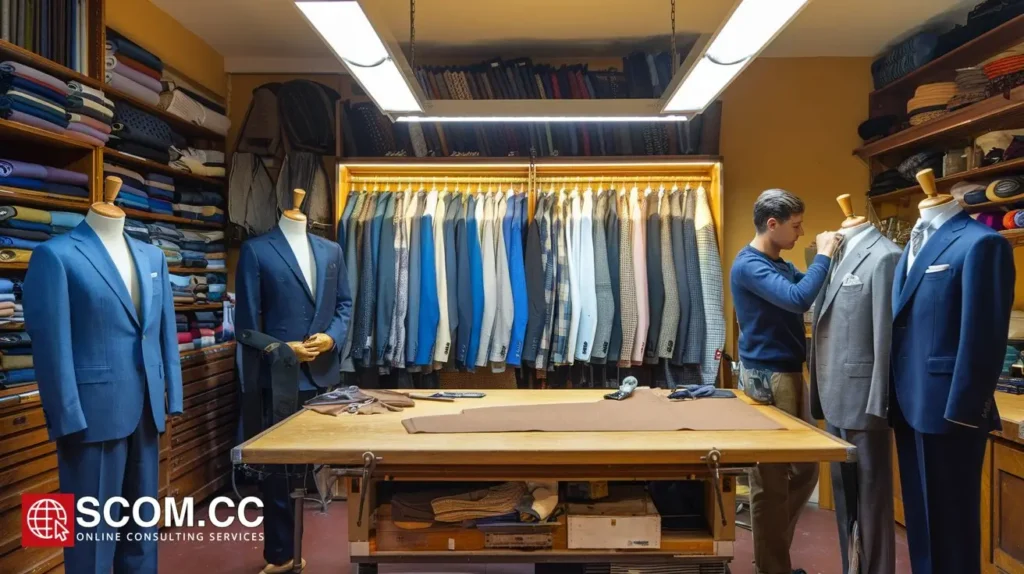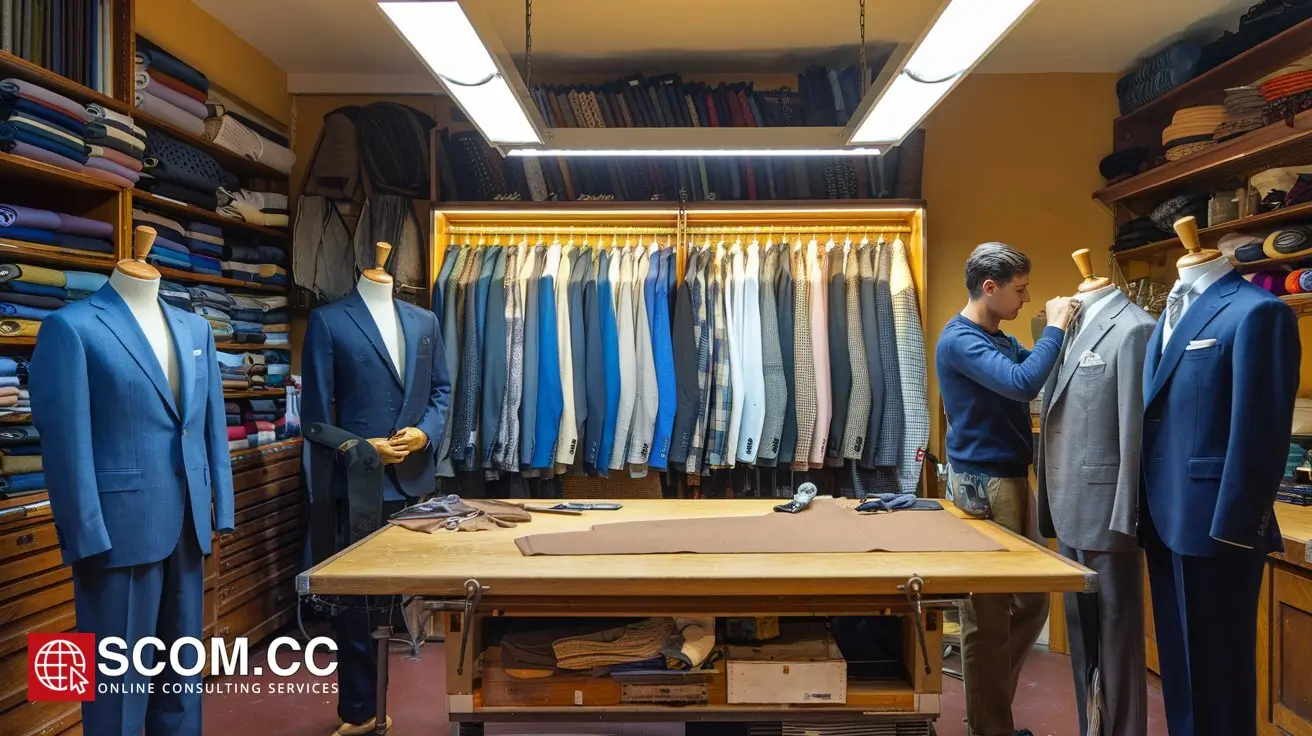How Can You Create Custom Accessories That Perfectly Complement Tailored Suits?

- How Can You Create Custom Accessories That Perfectly Complement Tailored Suits?
- Understanding the Importance of Custom Accessories
- Choosing the Right Fabrics and Materials
- The Role of Color Coordination
- Customizing Accessories to Personal Style
- Designing Custom Accessories
- Maintaining and Caring for Custom Accessories
- Conclusion
- Summary Table
-
FAQ
- 1. What materials are best for custom accessories?
- 2. How do I choose the right color for my accessories?
- 3. What are some effective ways to match patterns and textures?
- 4. How can I incorporate personal style into custom accessories?
- 5. What role do skilled artisans play in designing custom accessories?
- 6. How should I store and care for my custom accessories?
- 7. What are the best practices for cleaning custom accessories?
How Can You Create Custom Accessories That Perfectly Complement Tailored Suits?
Understanding the Importance of Custom Accessories
In the world of high fashion, the right accessories can transform a well-tailored suit into a statement of sophistication and style. Custom accessories are not just about adding flair—they are integral to enhancing the overall aesthetic and making a unique impression. When executed correctly, they can elevate a suit from being merely elegant to truly exceptional.
Choosing the Right Fabrics and Materials
When crafting custom accessories, the choice of fabrics and materials is paramount. For accessories such as ties, pocket squares, and cufflinks, materials like silk, cashmere, and fine leather are preferred for their luxurious feel and durability. Silk ties offer a rich luster and are ideal for formal settings, while cashmere pocket squares provide a touch of softness and elegance. High-quality leather for cufflinks ensures longevity and a polished finish.
Matching Textures and Patterns
Patterns and textures play a crucial role in how accessories complement a tailored suit. A classic silk tie with a subtle pattern can add a layer of depth without overwhelming the overall look. For a more adventurous approach, consider contrasting textures, such as a knitted tie paired with a smooth, tailored suit. The interplay of patterns—from polka dots to stripes—should harmonize with the suit's fabric, avoiding clashes and ensuring a cohesive appearance.
The Role of Color Coordination
Harmonizing with Suit Colors
Color coordination is essential when designing custom accessories. For traditional suit colors like navy, gray, or black, accessories should complement rather than compete. Neutral tones such as silver, gold, or deep burgundy work well with a variety of suits, while bold colors can be used strategically to make a statement. Pastel shades are ideal for lighter suits and spring events, whereas darker hues provide a classic, sophisticated look.
Creating a Balanced Palette
Balance is key to achieving a polished look. If the suit features a bold pattern or vibrant color, opt for subtle accessories to avoid overwhelming the outfit. Conversely, a neutral suit provides the opportunity to experiment with brighter accessories or distinctive patterns. Ensure that the colors of the tie, pocket square, and cufflinks are harmonious and contribute to an overall balanced appearance.
Customizing Accessories to Personal Style
Incorporating Unique Elements
Custom accessories allow for the incorporation of unique elements that reflect personal style. Whether it’s an engraved cufflink with a personal monogram or a pocket square featuring a bespoke design, these details add a personalized touch. Collaborating with skilled artisans can result in accessories that not only complement the suit but also resonate with individual taste.
Considering Occasion and Purpose
Different occasions call for different styles. For formal events, choose accessories that are understated yet elegant. A classic silk tie paired with simple, refined cufflinks is appropriate for weddings or high-profile business meetings. For more casual settings, such as social gatherings or relaxed business environments, you might opt for playful patterns or colorful pocket squares that express creativity while maintaining sophistication.
Designing Custom Accessories
Working with Skilled Artisans
When designing custom accessories, partnering with skilled artisans ensures a high level of craftsmanship. Artisans specializing in bespoke accessories can offer valuable insights into material selection, design options, and finishing techniques. Their expertise helps achieve a high standard of quality and ensures that every detail, from stitching to engraving, meets your expectations.
Utilizing Advanced Customization Tools
Modern technology offers advanced tools for customizing accessories. Tools like 3D modeling software and online customization platforms allow for precise design and visualization. These tools enable you to experiment with different patterns, colors, and materials, ensuring the final product aligns perfectly with your vision.
Maintaining and Caring for Custom Accessories
Proper Storage Techniques
To ensure the longevity of custom accessories, proper storage is essential. Silk ties and pocket squares should be stored in a cool, dry place, preferably in a tie rack or pocket square box to prevent wrinkles. Leather accessories should be kept in a breathable fabric bag to avoid moisture damage. Regular maintenance and careful handling extend the life of these high-quality items.
Regular Cleaning and Maintenance
Regular cleaning is crucial for maintaining the pristine condition of custom accessories. Silk ties and pocket squares can be gently hand-washed or dry-cleaned as recommended. Leather cufflinks should be cleaned with a soft cloth and leather conditioner to maintain their shine and prevent cracking. Following these care guidelines ensures that your accessories continue to enhance your tailored suits for years to come.
Conclusion
Creating custom accessories that perfectly complement tailored suits involves a careful blend of quality materials, color coordination, personal style, and expert craftsmanship. By focusing on these elements, you can ensure that each accessory not only enhances the suit but also expresses individual sophistication and style. Embrace the art of customization to achieve a look that is both refined and uniquely yours.
Summary Table
| Section | Key Points |
|---|---|
| Understanding the Importance of Custom Accessories | Custom accessories enhance the overall aesthetic and sophistication of a tailored suit. |
| Choosing the Right Fabrics and Materials | Use premium fabrics like silk, cashmere, and leather; match textures and patterns with the suit. |
| The Role of Color Coordination | Harmonize accessory colors with suit colors; balance bold and neutral tones for a cohesive look. |
| Customizing Accessories to Personal Style | Incorporate unique elements; tailor accessories to occasion and personal style. |
| Designing Custom Accessories | Collaborate with skilled artisans; use advanced customization tools for precise design. |
| Maintaining and Caring for Custom Accessories | Store accessories properly; follow cleaning and maintenance guidelines to ensure longevity. |
FAQ
1. What materials are best for custom accessories?
Premium materials such as silk, cashmere, and fine leather are ideal for custom accessories. They offer luxury, durability, and a refined appearance.
2. How do I choose the right color for my accessories?
Match accessory colors with your suit’s color. For traditional suits, opt for neutral or complementary tones. For neutral suits, you can experiment with bolder colors or distinctive patterns.
3. What are some effective ways to match patterns and textures?
For a balanced look, choose patterns and textures that complement rather than clash. A classic silk tie with a subtle pattern works well with a textured suit, while contrasting textures can add visual interest.
4. How can I incorporate personal style into custom accessories?
Personalize your accessories with unique elements like engraved cufflinks or bespoke pocket square designs. Tailor the accessories to reflect your individual style and preferences.
5. What role do skilled artisans play in designing custom accessories?
Skilled artisans ensure high-quality craftsmanship and attention to detail. They offer valuable insights and help bring your design vision to life, ensuring the final product meets your expectations.
6. How should I store and care for my custom accessories?
Store accessories in a cool, dry place. Use a tie rack or pocket square box for silk items and a breathable bag for leather. Clean accessories according to their material-specific care instructions to maintain their condition.
7. What are the best practices for cleaning custom accessories?
Hand-wash or dry-clean silk ties and pocket squares as needed. Clean leather accessories with a soft cloth and conditioner. Regular maintenance helps preserve their quality and appearance.

To explore more about tailoring, visit our Blog of Tailoring. If you have any questions or need assistance, go to our contact page. Additionally, you can find more information about tailoring and consulting at this tailoring and consulting portal.

Leave a Reply